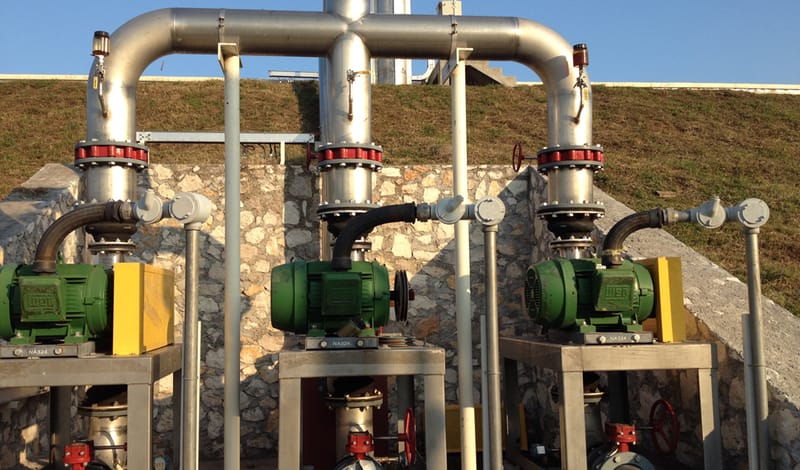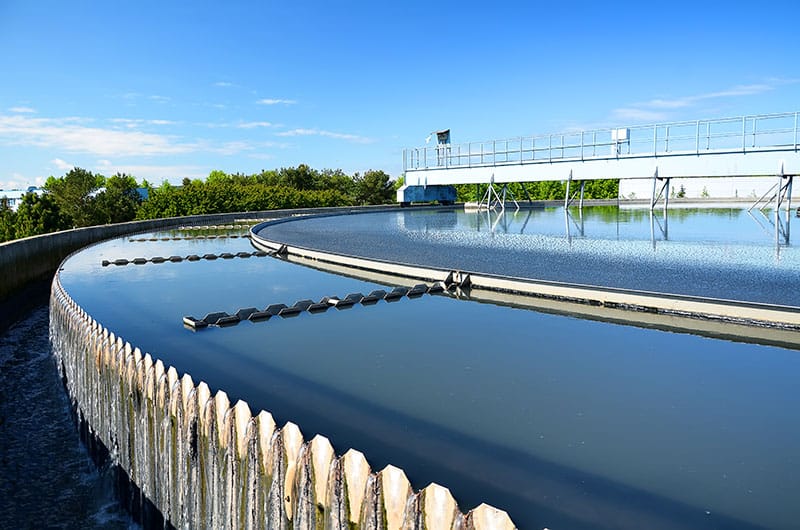Water Treatment Solutions for Manufacturing of Bakery Product

The bakery industry, encompassing the production of bread, pastries, cakes, cookies, and other baked goods, is highly dependent on water for various processes, including dough mixing, ingredient blending, and equipment cleaning. However, this heavy reliance on water leads to significant wastewater generation, which can be laden with organic materials, fats, oils, and other contaminants. Effective water treatment solutions are essential not only for maintaining environmental sustainability but also for improving operational efficiency and cost-effectiveness in bakery product manufacturing. In this blog, we explore key water treatment solutions specifically designed for the bakery industry, with a focus on reducing water consumption and promoting sustainability in wastewater management.

The Role of Water in Bakery Manufacturing
Water is a crucial component in bakery product manufacturing, involved in almost every step of the production process. During dough preparation, water hydrates the flour and activates the yeast, influencing the final texture and quality of the product. It is also a key ingredient in mixing batters, fillings, and glazes. Additionally, water is extensively used for cleaning and sanitizing bakery equipment, ensuring compliance with food safety regulations and maintaining high hygiene standards. However, this heavy water usage also results in large volumes of wastewater, which contains organic residues, fats, oils, and cleaning chemicals that must be treated before disposal or reuse.
Wastewater Challenges in Bakery Product Manufacturing
The wastewater generated by bakeries presents several challenges. It typically contains high levels of organic matter, such as sugars, starches, and proteins, all of which contribute to an elevated biological oxygen demand (BOD). If discharged untreated, this can deplete oxygen levels in natural water bodies, harming aquatic life. Another challenge is the presence of fats, oils, and grease (FOG), which can clog wastewater systems and interfere with treatment processes. Bakery wastewater may also contain flour dust and residue, contributing to the suspended solids load, as well as chemical contaminants from cleaning agents and sanitizers. To address these challenges, bakeries need effective water treatment strategies that can handle organic loads, remove FOG, and ensure chemical residues are neutralized.

Pre-Treatment Solutions
Pre-treatment is the initial phase of wastewater management in bakeries, aimed at reducing the solid and organic load before the wastewater enters more advanced treatment systems. This step is essential for preventing damage to downstream equipment and improving the overall efficiency of the treatment process. One of the most common pre-treatment methods is the use of screens and filters. These are installed at strategic points in the bakery to capture large particles, such as dough remnants, flour, and food debris. Another effective pre-treatment solution is the use of oil and grease traps, which separate FOG from the wastewater, preventing them from clogging pipes or interfering with biological treatment systems.
Biological Treatment Systems
Given that bakery wastewater is rich in organic matter, biological treatment systems are an effective solution for breaking down these contaminants. Aerobic treatment, which involves the introduction of oxygen into the wastewater, is a widely used method in the bakery industry. It promotes the growth of bacteria that digest organic materials such as starches, proteins, and sugars. The most common aerobic treatments include activated sludge systems and aerobic lagoons, both of which are effective at reducing BOD levels in bakery wastewater.
Another promising biological treatment method is anaerobic digestion. This process breaks down organic matter in the absence of oxygen, converting it into biogas, primarily methane, which can be captured and used as an energy source for the bakery. Anaerobic digestion not only reduces the environmental impact of bakery wastewater but also provides a renewable energy source, contributing to the overall sustainability of the production process.
Chemical Treatment Processes
In some cases, biological treatment alone is not sufficient to remove all contaminants from bakery wastewater. This is especially true when dealing with fats, oils, grease, and chemical residues from cleaning agents. In these instances, chemical treatment processes such as coagulation and flocculation are highly effective. During coagulation, chemicals are added to the wastewater to bind small particles together into larger clusters (flocs), which can then be removed through sedimentation or filtration. This process is particularly effective for removing suspended solids and FOG from the wastewater.
In addition to coagulation and flocculation, pH adjustment is often necessary to optimize the wastewater for treatment. Bakery wastewater may have an unbalanced pH due to the use of acidic or alkaline cleaning agents. Maintaining an optimal pH level is crucial for the effectiveness of both biological and chemical treatment systems.
Membrane Filtration Systems
Membrane filtration systems offer an advanced solution for bakeries looking to recycle and reuse water in their operations. Ultrafiltration (UF) and reverse osmosis (RO) are two popular membrane technologies used in bakery wastewater treatment. Ultrafiltration systems use membranes with fine pores to remove suspended solids, oils, and grease from the wastewater. This process produces high-quality water that can be reused in non-potable applications, such as equipment cleaning or cooling processes.
For bakeries aiming to further reduce their water footprint, reverse osmosis provides an even higher level of filtration. RO systems can remove dissolved salts, chemicals, and microorganisms from wastewater, producing water that meets potable standards. This makes RO ideal for bakeries looking to reuse water directly in production processes, reducing their reliance on fresh water resources.
Sludge Management and Resource Recovery
Bakery wastewater treatment produces sludge as a byproduct, which requires proper management to avoid environmental and operational issues. Sludge dewatering is a common technique used to reduce the volume of sludge by removing excess water. Dewatered sludge is easier and more cost-effective to dispose of, and in some cases, can be composted or used as a soil conditioner, turning waste into a valuable resource.
For bakeries that use anaerobic digestion as part of their wastewater treatment process, the biogas produced can be captured and used to generate electricity or heat, providing a renewable energy source for the facility. This not only reduces the environmental impact of sludge disposal but also helps bakeries lower their energy costs and improve overall sustainability.
Water Conservation Strategies in Bakeries
In addition to treating wastewater, bakeries can adopt water conservation practices to reduce their overall water consumption and improve sustainability. One of the most effective strategies is the recycling and reuse of treated wastewater. By implementing ultrafiltration or reverse osmosis systems, bakeries can treat wastewater to a high standard and reuse it for non-potable applications, such as cleaning, cooling, and dust suppression.
Another important strategy is the adoption of efficient cleaning processes. For example, bakeries can use Clean-in-Place (CIP) systems, which allow for the automated cleaning of equipment without disassembly. These systems use minimal water while ensuring high sanitation standards, reducing overall water consumption in the cleaning process.

Conclusion
Finally, upgrading to water-efficient equipment, such as high-pressure washers, water-saving nozzles, and automated shutoff valves, can significantly reduce water usage in bakery operations. These technologies help ensure that water is used efficiently without compromising on cleanliness or hygiene.